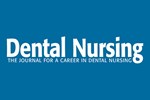
Patient denture hygiene knowledge
Milward P, Katechia D, Morgan MZ (2013) Knowledge of removable partial denture wearers on denture hygiene. Br Dent J 215: E20

Milward P, Katechia D, Morgan MZ (2013) Knowledge of removable partial denture wearers on denture hygiene. Br Dent J 215: E20

Stem cell transplantation, or bone marrow transplant, is used to treat haematological disease including blood cancers. This therapy has oral health implications for patients, who need thorough preoperative dental assessment and appropriate treatment

There is an association between diabetes and periodontitis, a chronic inflammatory disease of the gums. Anne Phillips gives an overview of the incidence and diagnosis, and discusses the treatment options



Bacteria becoming resistant to antibiotics is a natural phenomenon but is made worse by suboptimal and unnecessary use of antibiotics. Changes to dental prescribing practices and patient education are needed to resist this problem

Dysgeusia—disturbance of taste—is usually transient but can be a distressing long-term problem for some patients. It has numerous causes. Assessment will identify the reason for it and addressing the cause will often resolve the problems

Periodontitis compromises the supportive tissues around teeth. Treating its cause may reduce inflammation and achieve some repair. A more predictable way of regaining attachment in intrabony and interradicular defects is the use of regenerative procedures

Tobacco use has a detrimental effect on oral health and is related to conditions such as tooth loss, periodontal disease, impaired wound healing, teeth staining, bad breath and oral cancers. This article provides an overview of the dental care professional’s role in assisting patients to quit tobacc

Alcohol misuse affects both individuals and society and is estimated to cost the NHS £3.5 billion every year. Awareness of the effects of alcohol not only on the oral cavity but also on the whole body enables the dental professional to discuss with patients the associated risks

Dental composites are commonly used in general dental practice, yet many of us fail to understand their evolution and make up. The modern composite is the result of practitioners and patients demanding the very best aesthetics combined with durability and the manufacturers responding to this demand

Dr Nigel Carter OBE, Chief Executive of the British Dental Health Foundation, explains how a badge can make a difference in support of Mouth Cancer Action Month in November

Edwards J, Palmer G, Osbourne N and Scrambler S (2013) Why individuals with HIV or diabetes do not disclose their medical history at the dentist: a qualitative analysis. Br Dent J215: E10

Oral dryness can lead to significant problems, such as tooth decay, infection and impaired quality of life. This article provides a comprehensive overview of dry mouth, including the role of saliva in health, causes and management of dry mouth, and the role of dental care professionals in dry mouth

As more patients opt to have implants, dental nurses need to be able to recognise the signs of possible complications or implant failure. Failure and complications can occur at any time, from during the surgical and healing phases to after treatment has been completed